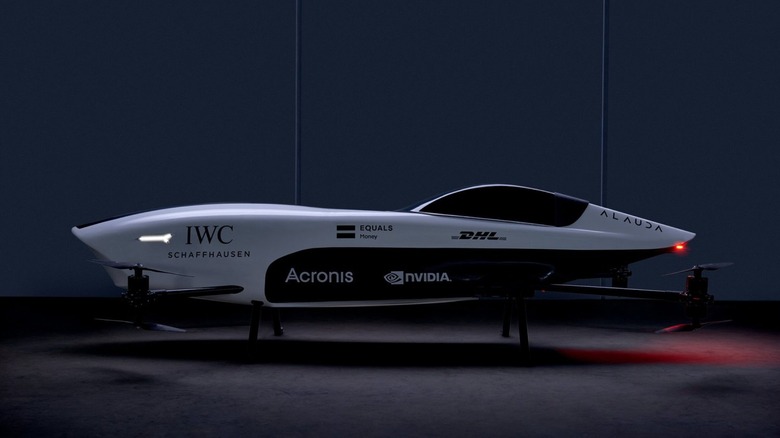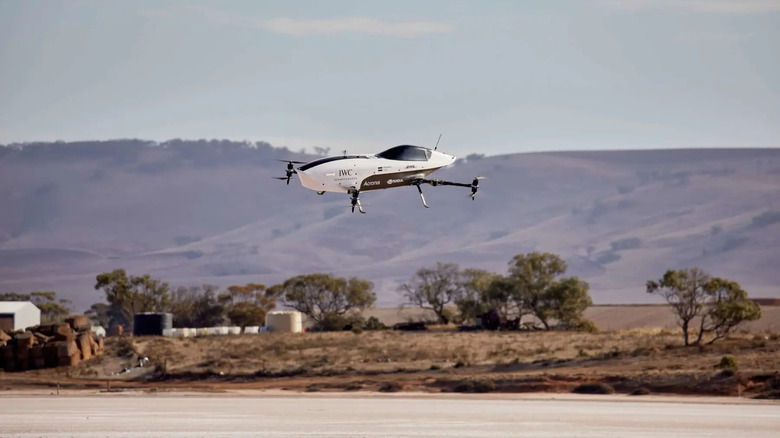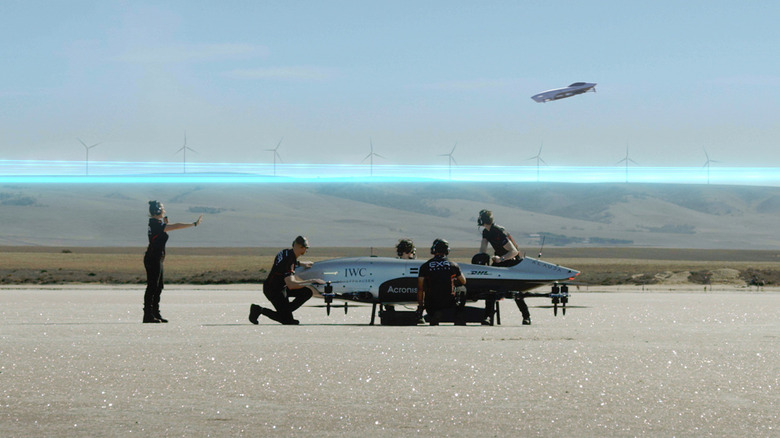The Airspeeder Is A Real F1 'Flying Racing Car' From The Future
Yes, it seems flying cars are coming sooner than expected, and they'll probably arrive from the most unexpected places (or manufacturers). We bet you already heard about Klein Vision's AirCar prototype, an actual flying car that recently got a Certificate of Airworthiness from the Slovak Transport Authority. Or maybe the Swedish-made Jetson One, a personal aerial vehicle that aims to commercialize flying cars like Henry Ford mass-produced the motorcar. On the other side of the affordability spectrum, a little-known company in South Australia is crunching its gray matter to build the world's best high-performance electric flying cars, and it's looking to no other than Formula One for inspiration.
We first caught wind of Alauda Aeronautics in early 2021 when it debuted its Airspeeder MK3 electric flying racing car. Right off the bat, it's easy to see that the MK3 doesn't fit our traditional definition of a "flying car" due to the absence of conventional wheels. While the creator of this vehicle is adamant that they've created a flying car, despite its lack of wheels, one thing we're sure of is that the Airspeeder is an octocopter capable of vertical takeoff and landing (VTOL) duties.
Flying Race Car
Matt Pearson founded Airspeeder, a flying car racing series, in 2016 with the vision of accelerating the next-generation mobility revolution through healthy competition. Pearson is also the founder of Alauda Aeronautics. According to Forbes, Alauda and Airspeeder's business model is similar to Formula E racing. Alauda will supply the hardware to multiple racing teams to build and develop their "flying cars" or eVTOLs and race around a virtual racetrack in the sky. In this manner, the racing teams and Alauda could explore the technological limits of flying vehicles.
The Airspeeder MK3 debuted in February 2021 and conducted its series of maiden flights by June. However, the MK3 is an ultra-light, electric-powered VTOL octocopter flown via remote control. Alauda claims the Airspeeder MK3 can perform hairpin turns better than a Formula One racing car, and it has a swappable battery pack. Developed explicitly to compete in the EXA Racing Series, the MK3 is a testbed for what's possible in the blossoming world of flying cars.
Formula 1 Of The Skies
More exciting is the impending debut of the Airspeeder MK4, a human-piloted eVTOL that Alauda said is "the world's first electric flying racing car." Similar in design to the MK3 but with a more extensive jet fighter-type canopy (to fit an actual human pilot), it has eight tilting electric motors that collectively pump out 540 horsepower. It also has eight carbon fiber propellers and an interchangeable battery pack. With an empty weight of about 265 pounds (120 kg) and a maximum takeoff weight of 400 pounds (881 kg), the MK4 goes from zero to 60 mph in 2.3 seconds and has a 99.5 mph (160 kph) top speed, although it can go up to 124 mph (200 kph) without the speed limiter.
Power is courtesy of an interchangeable 500 kW battery pack that delivers five to 20 minutes of flying time. Pit stops are mandatory in the Airspeeder racing series, making it seem like an actual Grand Prix. Moreover, the MK4 has sophisticated telemetry that instantly transmits racing operation data to the pit crew and the factory. It has eight broadcast cameras, a front radar, a lateral LIDAR sensor, and an active altimeter system for maximum safety. Inside, the pilot has an augmented reality visor to ensure it doesn't get lost in the sky.


